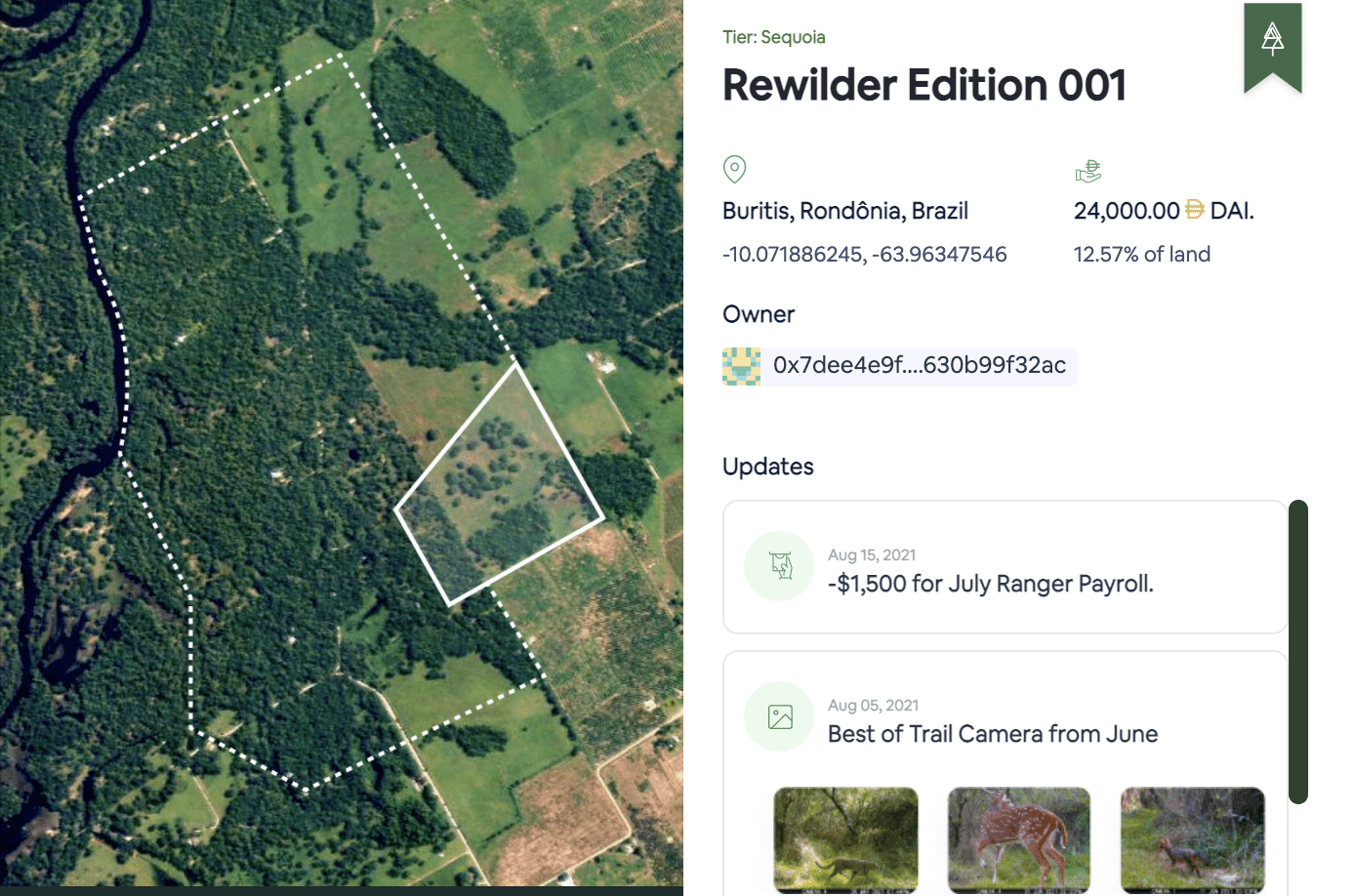Rewilder NFTs – Preserving Wildlife One NFT at a Time

Why not take something as potent as NFTs and combine it with an issue that could use a spark of excitement to get people involved? That’s exactly what the Rewilder project is doing, issuing NFTs to fund a non-profit project for passive rewilding nature.
What Are Rewilder NFTs?
Rewilder is a crypto-native, nonprofit issuing NFTs in exchange for donations. They’re using the funds to purchase land for preservation and passive rewilding.
Passive rewilding is the practice of blocking off land and letting nature be nature, organically restoring the natural environment. The project points to how the reintroduction of wolves in Yellowstone Park restored river and wildlife ecosystems there.
Here are the important details of Rewilder:
- NFT auction set for October 11th, 2021
- Minimum donation is $3,000 in crypto – the approximate cost to add ~1 hectare (~2.5 acres) of wildland
- Each donor will receive an NFT displaying the exact parcel of land your donation went toward purchasing
- Every land project purchased will have an ETH address where periodic updates will be shared on how the land is doing (info, pictures, satellite imagery), as well as a penny-by-penny breakdown of how the money is being spent
- % of each NFT sale goes to an endowment fund, which will be put toward DeFI projects in order to generate returns to help sustain recurring costs of the project.
In the future, they have plans to allow their NFT owners to vote on what the next parcel of land purchased will be. For the first go-around, Rewilder will be choosing the land.
Why Should You Care?
For one, the face of the project is Manuel Araoz, engineer and one of the key creators of Decentraland. In other words, it’s not going to be a half-baked project.
Two, rewilding the planet is the right thing to do.
Three, (and I believe the most compelling reason) they’re creating a real-life example of how nonprofits can be run more transparently via blockchain and NFTs.
Manuel Araoz explains the project in a nutshell:
To use NFTs to represent contributions to a non-profit organization that buys land for conservation.
This is an idea that every nonprofit should steal right now. And that is to issue NFTs to all donors so that they have a visual, non-deletable “receipt” to show the impact of their donation.
It’s not that different from the cards you might get from UNICEF showing the kid your donation helped put through school in a third-world country. However, as an NFT, you receive a digital memento you can display forever – and essentially create a visual collection of the causes you care about and have contributed to.
We should support new ideas like this that improve upon old models. And I believe the transparency that blockchain provides can really turn non-profits in a more fruitful direction. One where a global audience can contribute and track with certainty.
Some people had different opinions on how Rewilder could be done. For instance, allowing NFT buyers to actually own the land they purchased, as opposed to donations:
But I think that its current plan is a great MVP – allowing for more ambitious ideas in the future.
Elevating Nature Nonprofits with NFTs
In preparation for one of our podcasts, I was pondering an idea about using NFTs to fund the protection of endangered species.
Essentially, it would be a virtual world where people could explore and learn about the natural environments that extinct and endangered species inhabited. Think "if Animal Planet created an explorable world before humans".
Each exhibit in this virtual world could be owned by anyone who purchased the corresponding NFT of the species in the exhibit.
Patrons would have to pay to visit each exhibit with the native cryptocurrency. Then, the owners of each exhibit (whoever owns the NFTs) could decide what non-profit they could donate the proceeds to.
It’s an ambitious idea that would probably cost more to create than was fiscally right. However, as I did my research on Rewilder, it turns out that Manuel Araoz’s idea for Rewilder started from this same core idea of buying and issuing NFTs to track the progress of endangered species.
Furthermore, there happen to be two NFT projects working in this same vein called Project Ark & Wildcards – where they’re issuing NFTs to save endangered species.
What’s so unique about this moment in NFTs is that you can have an “out-there” idea like mine, go do some research, and actually find the same project you thought of at ground zero.
Thus, further proving that now is the time to experiment with NFTs and essentially use them as crowd-sourcing for new ideas.
Ready to Learn About NFTs?
Join 11,000+ readers of NFT QT, a weekly newsletter packed with tips and actionable insights for people fascinated with NFTs just like you.
